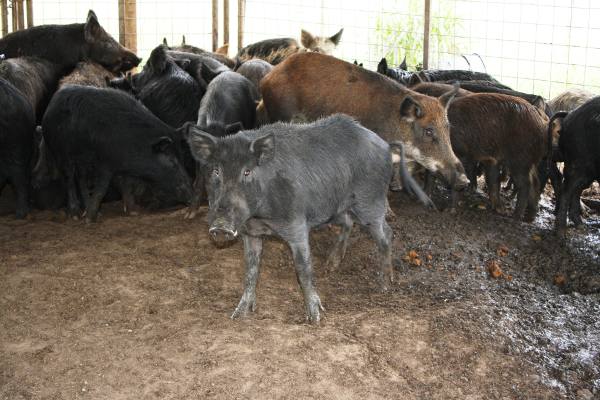January 2, 2013

Texas A&M AgriLife Extension Service’s new publication, “Feral Hog Approved Holding Facility Guidelines in Texas,” SP-488, is now available.
“With feral hog numbers on the rise and potential profits possible, the need for the proper facilities, also known as buyer stations, to hold and maintain them until such time as they can be marketed, also rises,” said Jared Timmons, AgriLife Extension associate headquartered in San Marcos with Texas A&M University’s department of wildlife and fisheries sciences and one of the authors of the publication.
“These facilities are needed because they provide a way for landowners to make money from hogs, hopefully offsetting some of the damage costs. This fact sheet explains the guidelines involved in operating such an approved holding facility,” Timmons said.
The publication explains the Texas Animal Health Commission mandates that must be met and maintained before a facility can become and remain an approved holding facility. These rules include such guidelines as maintaining a double hog-proof fence around the facility, how and what records must be kept on the animals and deadlines that must be met in order to be re-authorized as an approved holding facility.
“There is no fee for operating an approved holding facility, but because these animals have become such a nuisance and health threat in some instances, there is a fair amount of record keeping that must be maintained,” Timmons said.
Well run facilities offer a much-needed service as they provide a market to landowners trying to recoup some of the monetary losses incurred from the damage the hogs cause.
“Approved holding facilities are regulated by the Texas Animal Health Commission, but the commission does not get involved with any of the pricing associated with the animals,” he said. “Depending on where and how the hogs are marketed, prices now range around 10 cents to 20 cents a pound live-weight for hogs weighing up to 100 pounds, around 30 cents per pound for 100 to 150 pounders and 60 cents for those 150 pounds or more.”
Timmons said approved holding facilities hold feral hogs, which he added are the only type of animals approved for the facilities, until a full load can be collected. These are usually trucked to authorized hunting preserves (males only) or to one of the two feral hog processing facilities in Texas who market most of the meat overseas.
Support for this publication came from the Plum Creek Watershed Feral Hog program, which is provided through Clean Water Act §319(h) nonpoint source funding from the Texas State Soil and Water Conservation Board and the U.S. Environmental Protection Agency.
This publication along with 15 others dealing with feral hogs is available at
http://agrilifebookstore.org/publications.
You May Also Like




